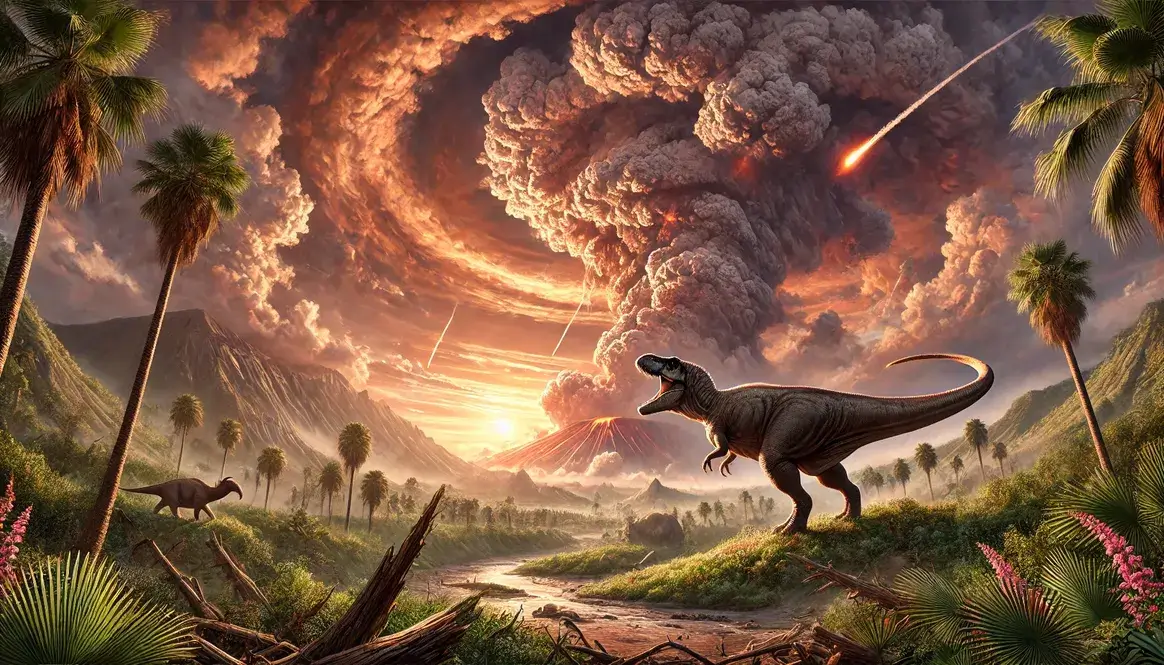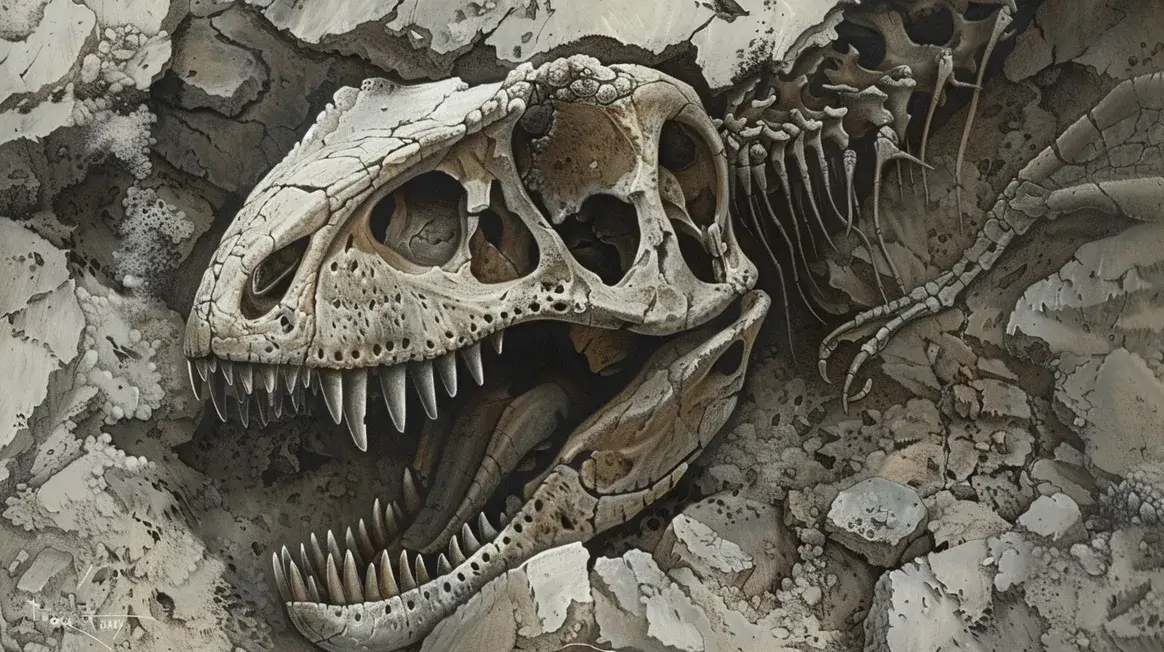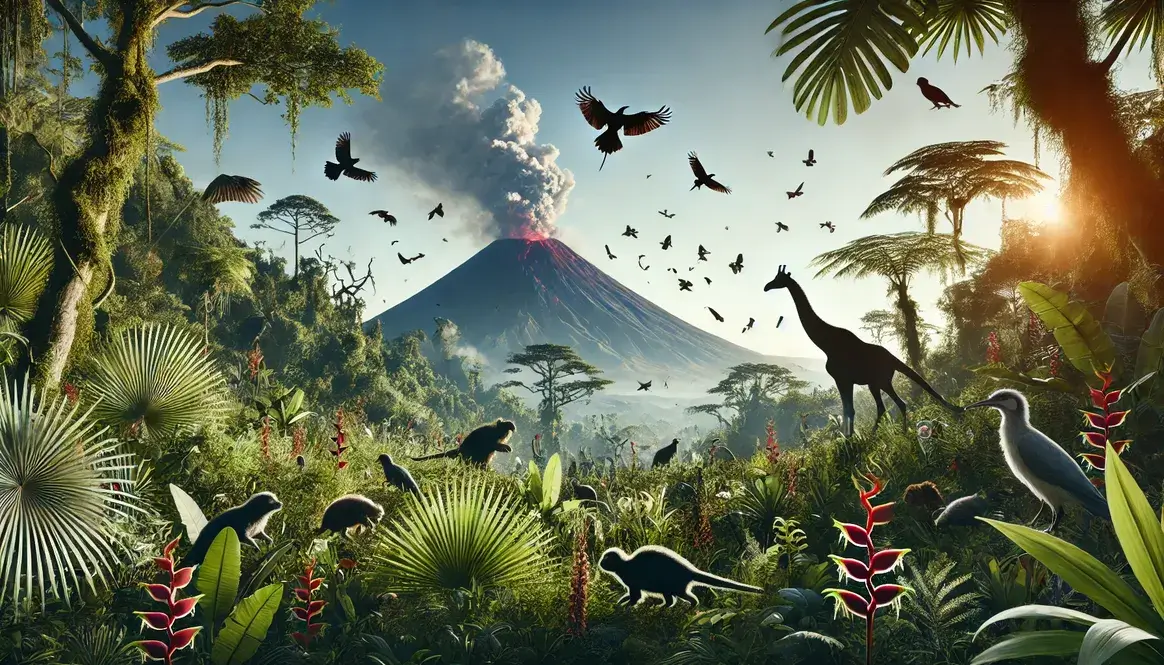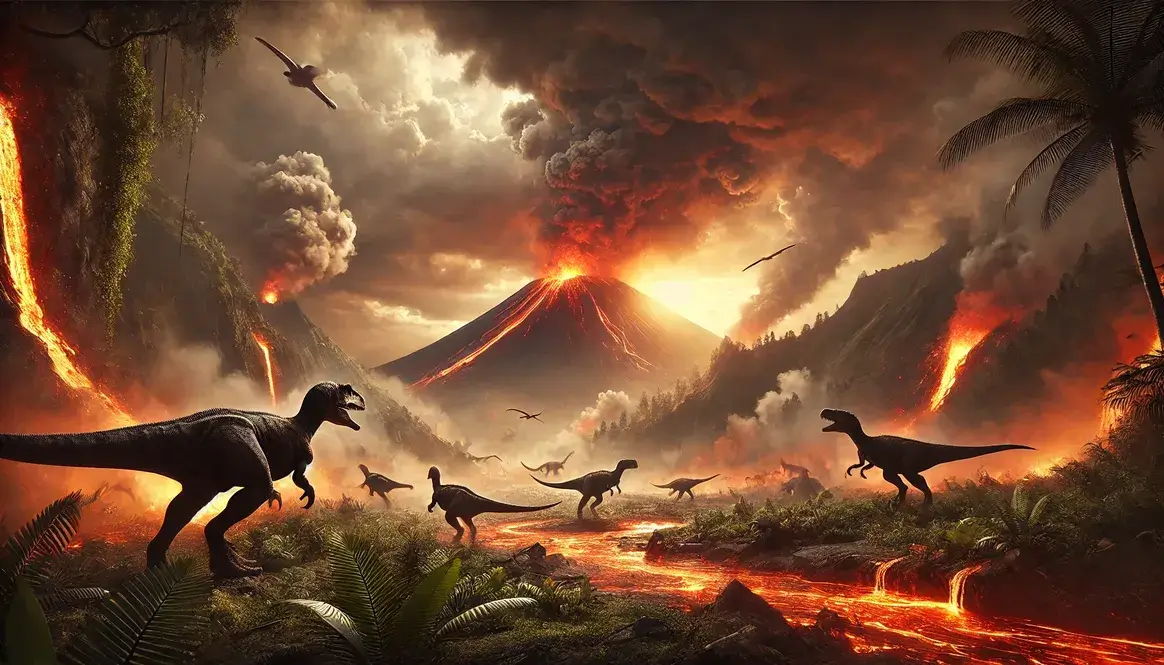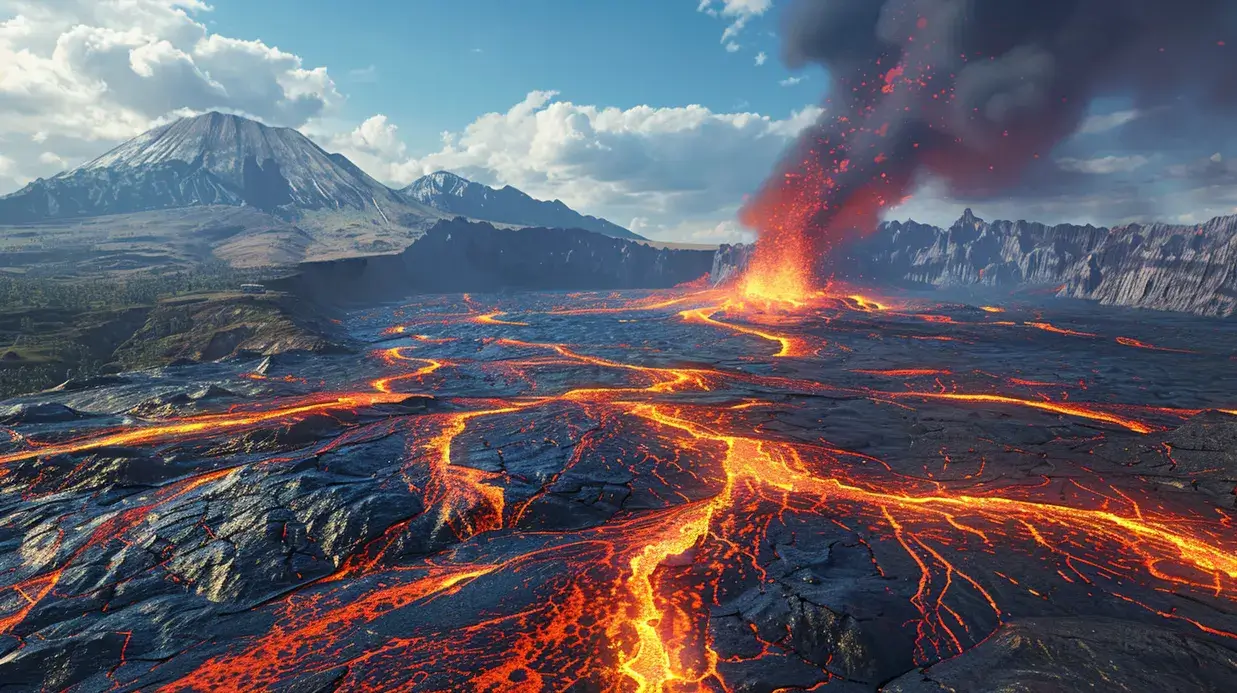The Deccan Traps, located in western India, represent one of the largest volcanic events in Earth’s history. These enormous lava flows covered an area larger than the size of Texas, releasing massive amounts of gases and ash into the atmosphere. The timing of these eruptions is crucial to understanding their potential role in the extinction of dinosaurs.
Scientists have determined that the main phase of Deccan Traps eruptions occurred around 66 million years ago, coinciding with the end of the Cretaceous period and the disappearance of dinosaurs. This timing has led researchers to question: Did Deccan Traps kill dinosaurs?
| Key Points | Details |
|---|---|
| Deccan Traps Location | Western India |
| Eruption Period | 66 million years ago |
| Main Effects | Climate change, acid rain, global cooling |
| Scientific Debate | Ongoing discussion about role in dinosaur extinction |
Did Deccan Traps kill dinosaurs? Examining the Evidence
To answer this question, we need to look at the effects these massive eruptions might have had on the Earth’s climate and ecosystems. The Deccan Traps released enormous amounts of gases and particles into the atmosphere, which could have caused significant changes to the environment.
Volcanic Gases and Climate Change
The Deccan Traps eruptions released large quantities of greenhouse gases, primarily carbon dioxide, into the atmosphere. These gases can trap heat, potentially leading to global warming. Here’s how this process might have affected the Earth:
- Increased atmospheric CO2 levels
- Rising global temperatures
- Changes in rainfall patterns
- Alterations to plant growth and food chains
The potential global warming effects of these greenhouse gases could have created challenging conditions for dinosaurs and other life forms. Changes in temperature and weather patterns might have affected food availability and habitats, making it difficult for some species to survive.
Acid Rain and Ocean Acidification
The Deccan Traps eruptions didn’t just release greenhouse gases; they also spewed out sulfur dioxide and other acidic compounds. When these mix with water in the atmosphere, they create acid rain. This acidic precipitation can have devastating effects on the environment:
- It damages plant leaves, making it harder for them to photosynthesize
- It changes soil chemistry, affecting plant growth
- It can harm animals directly or indirectly through their food sources
But the effects weren’t limited to land. The oceans absorbed much of the carbon dioxide released by the eruptions, leading to ocean acidification. This process makes the water more acidic, which can be harmful to marine life, especially creatures with shells or skeletons made of calcium carbonate.
Marine ecosystems faced significant challenges:
- Coral reefs struggled to grow
- Shellfish had difficulty forming their protective shells
- The entire marine food web was disrupted
These changes in both terrestrial and marine environments would have put enormous pressure on dinosaurs and other species, potentially contributing to their extinction.
Atmospheric Dust and Global Cooling
While greenhouse gases from the Deccan Traps could have caused warming, another effect of the eruptions might have led to cooling. The volcanoes ejected vast amounts of dust and ash into the atmosphere, creating a volcanic winter. This phenomenon occurs when particles in the air block sunlight from reaching Earth’s surface.
Effects of Volcanic Winter:
| Effect | Impact on Environment |
|---|---|
| Reduced sunlight | Lower temperatures globally |
| Decreased photosynthesis | Reduced plant growth and food availability |
| Changes in precipitation | Altered weather patterns and habitats |
The blocked sunlight would have lowered temperatures around the world, potentially creating harsh conditions for dinosaurs adapted to warmer climates. Moreover, the reduced sunlight would have disrupted photosynthesis, the process plants use to make food. This disruption could have caused a collapse in food chains, affecting herbivorous dinosaurs first and then carnivores.
The combination of these cooling effects with the earlier warming from greenhouse gases could have created a volatile and unstable climate, making survival challenging for many species, including dinosaurs.
Comparing Volcanic and Asteroid Extinction Theories
When scientists discuss what caused the dinosaurs to go extinct, two main theories often come up: the Deccan Traps volcanic eruptions and the asteroid impact. Let’s look at how the volcanic theory stands up against the asteroid hypothesis.
Strengths of the Volcanic Hypothesis
The idea that the Deccan Traps eruptions caused dinosaur extinction has some strong points:
- Long-term environmental stress: Unlike an asteroid impact, which would have been a sudden event, the Deccan Traps eruptions lasted for thousands of years. This long-lasting volcanic activity could have slowly changed the Earth’s climate and ecosystems, making it harder for dinosaurs to survive over time.
- Gradual decline of dinosaur populations: Some scientists have found evidence that dinosaur populations were already decreasing before the big extinction event. This gradual decline fits well with the idea of long-term stress caused by volcanic activity.
The Deccan Traps effect on ancient life was likely significant. Volcanoes can change the environment in many ways, and these changes can build up over time. For example:
- Acid rain could have slowly made it harder for plants to grow
- Changes in temperature might have affected dinosaur eggs and babies
- Altered ocean chemistry could have reduced food sources for marine reptiles
These slow but steady changes might explain why some dinosaur species seem to have been struggling before the final extinction event.
Challenges to the Volcanic Theory
While the volcanic hypothesis has its strengths, it also faces some challenges:
Timing discrepancies: One of the biggest questions about the Deccan Traps theory is timing. Some scientists argue that the most intense volcanic activity happened after the main extinction event. If this is true, it’s harder to say that the volcanoes were the main cause of dinosaur extinction.
Here’s a simple timeline to help understand the issue:
| Time (million years ago) | Event |
|---|---|
| 66.5 – 66.0 | Main Deccan Traps eruptions |
| 66.0 | Peak dinosaur extinction |
| 66.0 – 65.5 | Continued volcanic activity |
Survival of some species: Another challenge to the volcanic theory is that some animals that should have been very sensitive to volcanic effects survived. For example, crocodiles and turtles made it through the extinction event, even though they’re often affected by changes in temperature and water quality.
This survival is puzzling if volcanoes were the main cause of extinction. Scientists are still trying to figure out why some animals survived while others didn’t. It’s possible that these survivors had special adaptations or were living in areas less affected by the volcanic activity.
Understanding how volcanoes affect evolution is an ongoing area of research. While the Deccan Traps clearly had a big impact on the environment, the full story of their role in dinosaur extinction is still being uncovered.
A Combined Blow: Volcanoes and Asteroid Impact
What if it wasn’t just one big event that caused the dinosaurs to go extinct? Many scientists now think it might have been a combination of the Deccan Traps eruptions and the asteroid impact. Let’s explore this idea.
Weakening Ecosystems
The Deccan Traps eruptions didn’t happen all at once. They occurred over thousands of years, slowly changing the Earth’s environment. This long-term volcanic activity might have made life harder for many species, including dinosaurs.
Here’s how volcanic activity could have weakened ecosystems:
- Climate changes: Warming and cooling cycles stressed plants and animals
- Food chain disruptions: Changes in plant life affected herbivores, then carnivores
- Ocean acidification: Marine life struggled in more acidic waters
- Air quality issues: Ash and gases made breathing difficult for some animals
These ongoing challenges may have made dinosaurs and other creatures more vulnerable to a sudden catastrophe. It’s like when you’re tired and stressed – you’re more likely to get sick if you come into contact with a virus.
Scientists studying volcanic ash in fossils have found evidence of these long-term effects. The ash can tell us about air quality and environmental conditions in the time leading up to the extinction event.
The “One-Two Punch” Hypothesis
The “One-Two Punch” hypothesis suggests that the Deccan Traps eruptions and the asteroid impact worked together to cause the mass extinction. It’s like in boxing, where a series of smaller hits (the volcanoes) weakens the opponent before the knockout blow (the asteroid).
This theory proposes that:
- The Deccan Traps eruptions stressed global ecosystems over a long period
- The asteroid impact then delivered a sudden, severe blow to already weakened life forms
The potential synergistic effects of both events could explain why the extinction was so severe and affected so many different types of animals and plants.
Consider this simplified timeline:
| Time | Event | Effect |
|---|---|---|
| Thousands of years | Deccan Traps eruptions | Gradual environmental stress |
| Sudden event | Asteroid impact | Immediate, severe global changes |
| Following years | Combined aftermath | Mass extinction |
Computer models of Deccan Traps help scientists understand how these volcanic eruptions might have interacted with the asteroid impact. These models can simulate changes in temperature, rainfall, and other environmental factors over time.
By considering both the long-term effects of volcanoes and the sudden impact of the asteroid, scientists can better explain the patterns of extinction and survival we see in the fossil record. This combined approach helps answer the question: “Did Deccan Traps kill dinosaurs?” while acknowledging the complexity of Earth’s history.
The Ongoing Scientific Debate
The question “Did Deccan Traps kill dinosaurs?” continues to spark lively discussions among scientists. As new research emerges, our understanding of this ancient mystery evolves.
Recent Research and Discoveries
Scientists are constantly uncovering new evidence that either supports or challenges the volcanic theory of dinosaur extinction. Here are some recent findings:
- Precise dating: Improved dating techniques have allowed researchers to pinpoint the timing of Deccan Traps eruptions more accurately. Some studies suggest that the most intense volcanic activity occurred after the main extinction event, challenging the idea that volcanoes were the primary cause.
- Chemical signatures: Analysis of K-Pg volcanic mercury levels in sediments from around the world has provided new insights into the global impact of the Deccan Traps eruptions. These chemical traces help scientists understand the extent and timing of volcanic activity.
- Climate reconstructions: Advanced computer models have helped scientists recreate ancient climates, showing how volcanic eruptions might have affected global temperatures and rainfall patterns over time.
- Fossil evidence: New fossil discoveries continue to refine our understanding of how different species were affected by the extinction event. Some findings support a gradual decline consistent with volcanic effects, while others suggest a more sudden extinction.
These ongoing research efforts demonstrate that the debate about the role of the Deccan Traps in dinosaur extinction is far from settled. Scientists continue to gather and analyze data to build a more complete picture of this pivotal moment in Earth’s history.
Alternative Explanations
While the Deccan Traps and asteroid impact theories dominate discussions about dinosaur extinction, scientists have proposed other factors that might have contributed to the demise of these ancient creatures. Some alternative explanations include:
- Multiple asteroid impacts: Some researchers suggest that Earth may have been hit by several asteroids over a short period, rather than a single large impact.
- Gradual climate change: Long-term changes in Earth’s climate, unrelated to volcanic activity, might have stressed dinosaur populations over time.
- Disease outbreaks: Widespread diseases could have affected dinosaur populations, making them more vulnerable to other environmental stresses.
- Changes in plant life: The evolution and spread of new plant species might have disrupted dinosaur food chains.
- Cosmic radiation: Some scientists have proposed that increased exposure to cosmic radiation, possibly due to changes in Earth’s magnetic field, could have affected dinosaur DNA and reproduction.
These alternative hypotheses remind us that Earth’s history is complex, and major events like mass extinctions often result from a combination of factors. The volcanoes at end of Cretaceous certainly played a role in shaping the environment, but their exact contribution to dinosaur extinction remains a topic of ongoing research and debate.
As scientists continue to investigate these various possibilities, our understanding of dinosaur extinction becomes more nuanced. The story of how these magnificent creatures disappeared from Earth is still being written, with each new discovery adding another piece to the puzzle.

